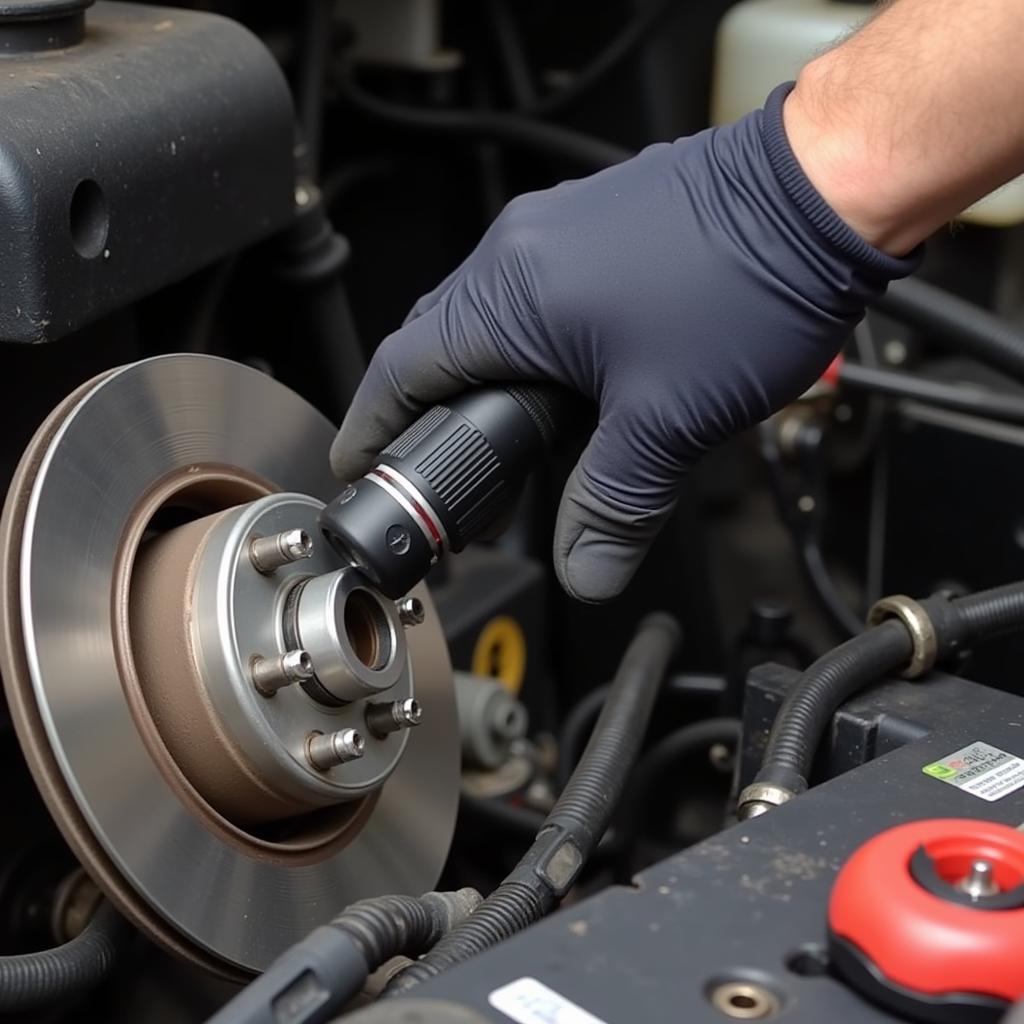The brake warning light on your 1997 Ford F150 is a critical safety feature. If it’s malfunctioning, you might need to address the brake warning resistor diode assembly. This guide provides detailed information about locating, diagnosing, and potentially replacing the brake warning resistor diode assembly in your 1997 F150. We’ll cover common issues, troubleshooting tips, and even remote programming options for advanced diagnostics.
Many drivers experience frustration when dealing with brake warning light issues. Understanding the role of the brake warning resistor diode assembly is the first step in resolving these problems. This component plays a crucial role in the proper functioning of your truck’s braking system, ensuring that the warning light illuminates when necessary. Learn more about the 1997 f150 brake warning resistor diode assembly.
Understanding the Brake Warning Resistor Diode Assembly
The brake warning resistor diode assembly is essentially a fail-safe device. It monitors the brake fluid level and the parking brake engagement. If either of these systems experiences a problem, the resistor diode assembly activates the brake warning light on your dashboard. This alerts you to potential issues with your brakes, promoting safety and preventing further damage.
Why is this small component so important? Imagine driving without knowing your brake fluid is low. The consequences could be disastrous. The resistor diode assembly acts as a vigilant guardian, ensuring you’re aware of potential braking system issues.
Locating the Brake Warning Resistor Diode Assembly in Your 1997 F150
The brake warning resistor diode assembly in a 1997 F150 is typically located behind the dashboard, near the brake pedal assembly. Accessing it might require removing some trim panels or components under the dash. While the exact location can vary slightly, it’s usually within reach once you’ve gained access to the area behind the dashboard. Refer to your vehicle’s service manual for precise instructions. Check out the 1997 f150 brake warning resistor diode assembly.
“Knowing the precise location of the resistor diode assembly is half the battle,” says veteran automotive electrician, Robert Miller. “A good service manual is your best friend in these situations.”
Troubleshooting Brake Warning Light Issues
Before replacing the brake warning resistor diode assembly, it’s important to diagnose the issue properly. Begin by checking your brake fluid level. Low fluid can trigger the warning light. If the fluid level is adequate, inspect the parking brake switch and wiring. A faulty switch or damaged wiring could also be the culprit.
 Mechanic Checking Brake Fluid Level in a 1997 Ford F150
Mechanic Checking Brake Fluid Level in a 1997 Ford F150
What if the fluid level and parking brake are fine?
If the fluid level and parking brake check out, the problem might indeed be the brake warning resistor diode assembly itself. Using a multimeter, you can test the assembly for continuity and resistance to verify its functionality. For complex electrical issues, remote diagnostics and software programming can pinpoint the problem with greater precision.
“Remote diagnostics are a game-changer,” adds Miller. “They allow us to analyze the vehicle’s systems in real-time and often identify problems that would be difficult to detect otherwise.”
Replacing the Brake Warning Resistor Diode Assembly
If you’ve determined that the resistor diode assembly needs replacement, the process is relatively straightforward. Disconnect the negative battery terminal before starting. Locate the assembly and carefully disconnect the wiring harness. Install the new assembly and reconnect the wiring. Reconnecting the battery terminal completes the process. Refer to your service manual for detailed instructions specific to your 1997 F150. Consider the 1997 f150 brake warning resistor diode assembly for your vehicle.
Conclusion
A functioning brake warning light system is paramount for your safety. Understanding the location and role of the brake warning resistor diode assembly in your 1997 F150 empowers you to address warning light issues effectively. With careful diagnostics and the right information, you can ensure your braking system remains in optimal condition. Don’t ignore your brake warning light; address it promptly to prevent potential hazards on the road. Remember the importance of the 1997 f150 brake warning resistor diode assembly.
FAQs
- What causes the brake warning light to come on? Low brake fluid, engaged parking brake, or a faulty brake warning resistor diode assembly.
- Where is the brake warning resistor diode assembly located? Behind the dashboard, near the brake pedal assembly.
- How do I test the brake warning resistor diode assembly? Use a multimeter to test for continuity and resistance.
- Can I replace the brake warning resistor diode assembly myself? Yes, but consult your service manual for detailed instructions.
- What are the signs of a bad brake warning resistor diode assembly? A continuously illuminated or erratic brake warning light, even when brake fluid levels are normal and the parking brake is disengaged.
- What should I do if my brake warning light stays on after replacing the resistor diode assembly? Consult a qualified mechanic for further diagnostics.
- Can remote diagnostics help with brake warning light issues? Yes, remote diagnostics can pinpoint complex electrical problems.
